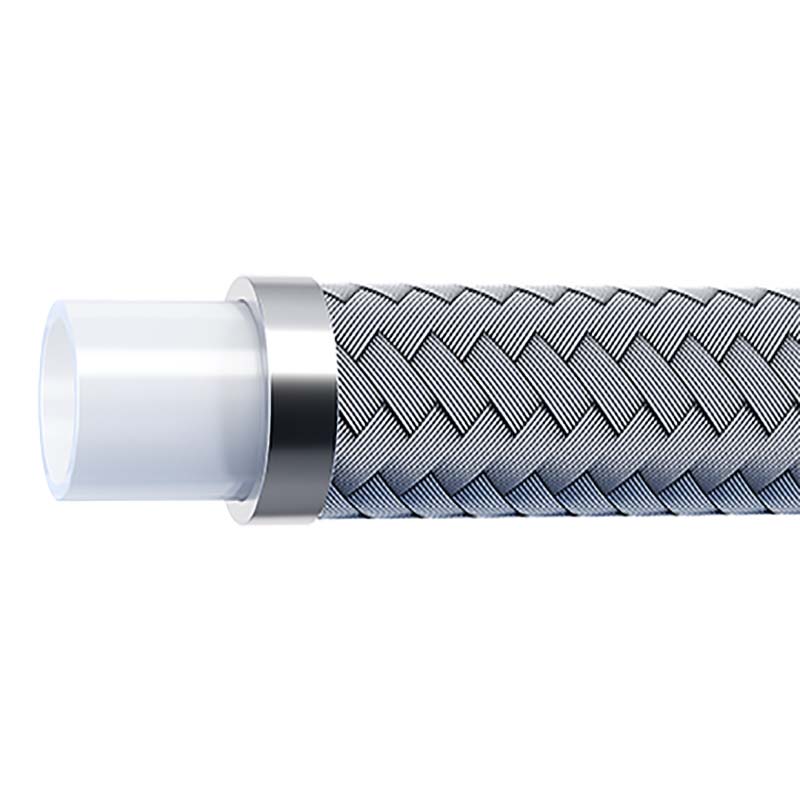As a core transmission component for high-temperature industries such as metallurgy and casting, the furnace door coolant rubber hose redefines the reliability standard under extreme working conditions with a five-layer composite structure. It uses a gradient composite inner layer of fluororubber (FKM) and ethylene propylene diene monomer (EPDM), and a double-layer stainless steel wire braided reinforcement layer. It can continuously withstand 4MPa dynamic pressure and drastic temperature fluctuations of 0.5℃ per second in a 1600℃ radiant heat environment. Passing ISO 7323 thermal aging test certification, the tensile strength retention rate of its pipe body is still 85% after being immersed in a 200℃ high-temperature oil medium for 2000 hours. With the outer layer of basalt fiber fireproof coating, it achieves UL94 V-0 flame retardant performance. In actual measurements at steel plants, the hose worked continuously for 8000 hours without leakage, successfully reducing the failure rate of the furnace door cooling system from 7.2% to 0.5%, becoming a "liquid firewall" to ensure the safe operation of metallurgical equipment.

As a core transmission component for high-temperature industries such as metallurgy and casting, the furnace door coolant rubber hose redefines the reliability standard under extreme working conditions with a five-layer composite structure. It uses a gradient composite inner layer of fluororubber (FKM) and ethylene propylene diene monomer (EPDM), and a double-layer stainless steel wire braided reinforcement layer. It can continuously withstand 4MPa dynamic pressure and drastic temperature fluctuations of 0.5℃ per second in a 1600℃ radiant heat environment. Passing ISO 7323 thermal aging test certification, the tensile strength retention rate of its pipe body is still 85% after being immersed in a 200℃ high-temperature oil medium for 2000 hours. With the outer layer of basalt fiber fireproof coating, it achieves UL94 V-0 flame retardant performance. In actual measurements at steel plants, the hose worked continuously for 8000 hours without leakage, successfully reducing the failure rate of the furnace door cooling system from 7.2% to 0.5%, becoming a "liquid firewall" to ensure the safe operation of metallurgical equipment.
Online Message
Please fill in your name and message, and don't forget to email and/or call if you wish. We will reply within 24 hours.
